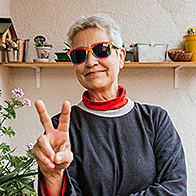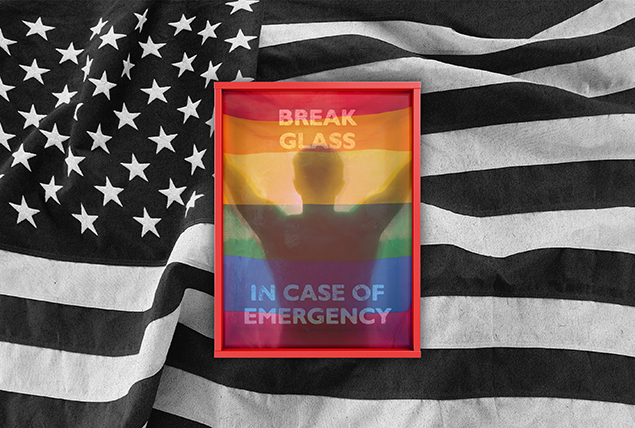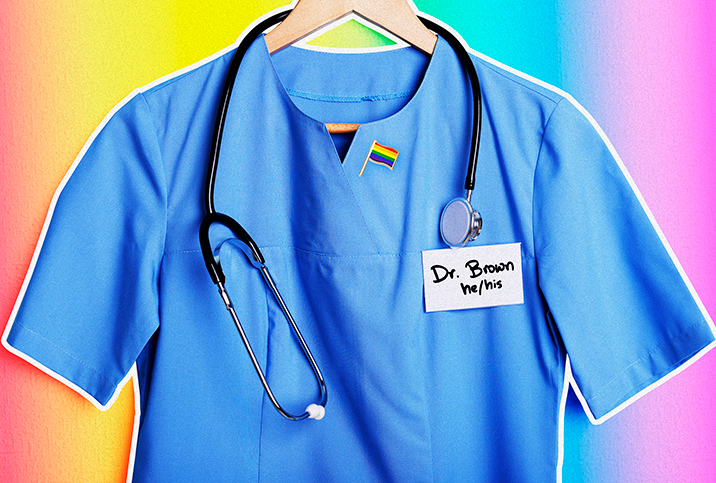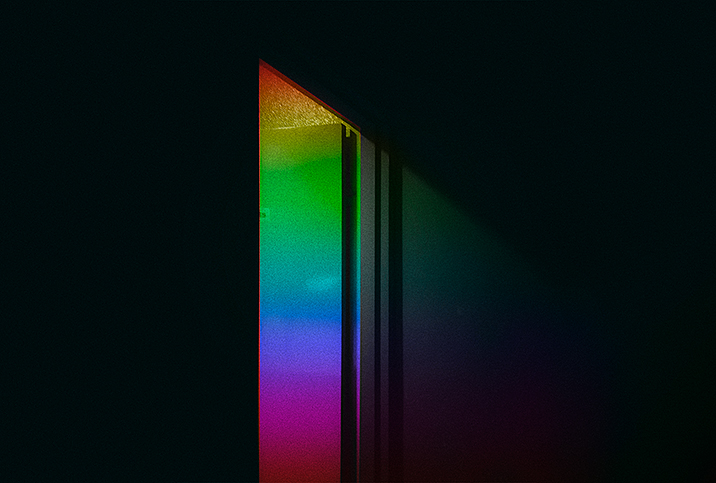Why Are More American Adults Identifying as LGBTQ?

Queer people have always been represented in our rich societal mix, but they haven't always felt safe to stand up and say so. Today, more Americans than ever identify as LGBTQ, especially in younger generations.
It's easy to think of it as a "trend" brought about by more openly queer representation and information. In reality, these figures are more likely to help queer and transgender people learn about an identity they've felt all along, while more widespread acceptance has begun to make people feel safer about coming out.
According to a 2023 Gallup poll, 7.2 percent of people in America identify as LGBTQ. That's more than twice as much as the 3.5 percent reported in 2012 when Gallup first began conducting its annual poll. The largest share of adults identifying as LBGTQ identified as bisexual, with 4.2 percent of poll respondents doing so.
While older generations have remained stable with their responses, the millennial and Gen Z populations are another story.
Does this mean there are more LGBTQ Americans now than a decade ago, or are we experiencing a social shift where more members of the community vocally share their identities?
A trend or trending upward?
In 2022, Gallup collected data from 10,000 adults across the United States. Its poll indicated about 20 percent of Gen Z adults and about 11 percent of millennials identify as LGBTQ.
"It's not that there are necessarily more people identifying as LGBTQ, but rather society and culture have shifted in a way that has allowed so many more people to be open about their LGBTQ identities," said Keygan Miller, a Washington, D.C.-based public training manager at The Trevor Project, a nonprofit focused on suicide prevention among LGBTQ youth.
Younger generations have had more queer and trans representation in consumable media and many know peers who openly accept their identities. Older generations typically saw LGBTQ people depicted in negative lights and had far fewer opportunities—if any—to see affirming media.
"Cultural perceptions of the LGBTQ+ community have changed tremendously in recent years and youth are at the forefront of this ongoing process," said New York City-based Melanie Willingham-Jaggers (they/she), the executive director of GLSEN (formerly the Gay, Lesbian & Straight Education Network), an American education organization working to end bullying, discrimination and harassment based on gender expression and identity, and sexual orientation. "The young LGBTQ+ people I work with are constantly finding new ways to overcome societal barriers and biases."
LGBTQ people had far fewer protections a decade ago. Progress has been made, but a number of organizations purport that the U.S. still has work to do in protecting all identities. Over the past several years, anti-trans legislation, in particular, has increased, with 34 states proposing bills that could be viewed as discriminatory against transgender people.
Because of this, and despite the growing population indicated by research, it's likely even more LGBTQ people still don't feel safe sharing their identities.
Acceptance and representation matter
Not all young people have accepting peers and adults in their lives, but the number of allies in the LGBTQ community has increased. A May 2020 study published in the Journal of LGBT Youth suggested a close relationship with someone in the community makes someone more likely to be an ally to the community.
While knowing a queer or trans person shouldn't be the only criterion for allyship, it may lead to greater acceptance for LGBTQ people and help promote safety for people to be open about their identity.
"Broadly, younger generations have been exposed to more LGBTQ representation and education than many generations before," Miller said. "Yet, the LGBTQ young people of today are still confronted with some of the same challenges as other generations."
For example, 73 percent of LGBTQ youth reported they had been bullied within the past year, Miller explained, and almost three-fourths of LGBTQ youth experienced discrimination based on their sexual orientation or gender identity at some point.
There are more visible organizations and individuals advocating for the safety and rights of LGBTQ people. With better representation, more people see themselves in others and begin to understand their identities.
Looking to the future
More than anything, the increase in LGBTQ-identified Americans ties into better overall sexual education and representation. Information accessible to people of all ages is a way to reduce misconceptions about the LGBTQ community.
A July 2020 study published in the Journal of LGBT Youth indicated fewer than 30 percent of students and teachers surveyed recalled LGBTQ sex education topics being thoroughly covered in their schools. People can't ask what they don't know to ask and not everyone knows where to find high-quality information.
"All young people, including LGBTQ+ young people, deserve to have safe, affirming school environments where they can learn and grow free of fear or harassment," Willingham-Jaggers said. "This is why we must encourage school and faculty to combat any type of anti-LGBTQ+ rhetoric in our communities by expressing solidarity at local school board meetings, voting or supporting your local GSA [General Services Administration] or advocacy group."
These constantly updated statistics can help society understand how more people are openly identifying as LGBTQ, but they don't tell a complete story. As our culture and education become more inclusive, these numbers likely will continue to rise.




















